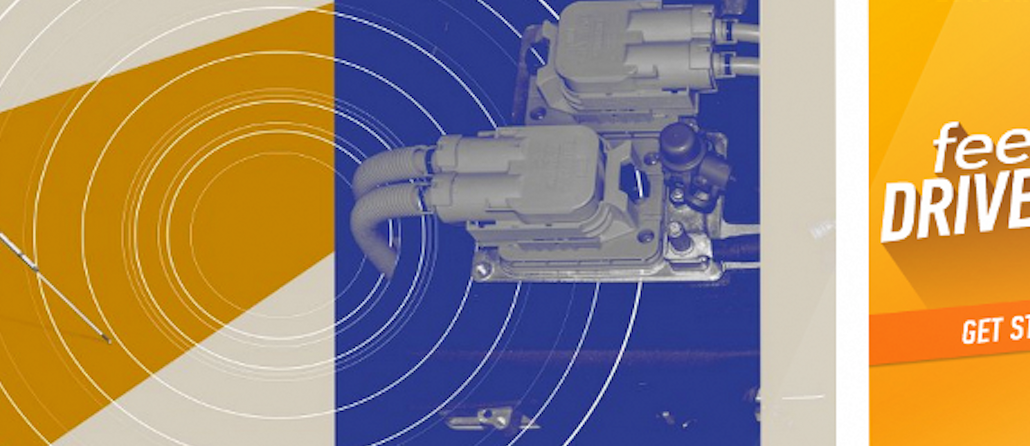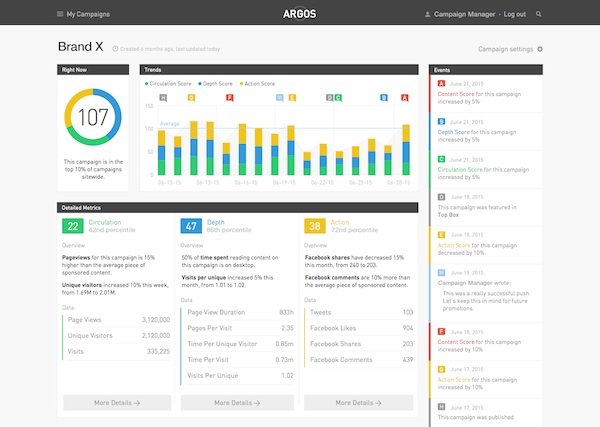Save 50% on a 3-month Digiday+ membership. Ends Dec 5.

Advertisers may be obsessed with native advertising, but few are sure about how to make sure it’s working. The Daily Beast, which relies on content marketing for 80 percent of its ad campaigns, has taken a data-driven approach to both creating native ads and to proving they work.
For the former, it has licensed a predictive tool that suggests topics that would work for clients’ campaigns based on social data. Once a campaign is running, there’s a homegrown dashboard that analyzes its performance in real time. This allows advertisers to take some of the guesswork out of topics they should address and to see how they performed.
Mike Dyer, co-managing director, chief product and strategy officer of the IAC-owned Beast, came from Hill Holliday, where he launched its content marketing practice. As a former agency executive, he found that the consumer data agencies use to inform their campaigns to be rudimentary.
“There’s still a tendency in publishers who do native advertising to rely on their creative gut,” Dyer said. “So we do a lot of work around, how do you ensure market fit before you shoot a frame?”
The predictive tool, called Cassandra, was first road-tested by the editorial side. It analyzes the social media activities of a brand’s social followers to see what other topics they’re interested in and which social platform they’re talking about those topics on. With it, the Beast can guide the brand in choosing topics to write about that wouldn’t necessarily be obvious. The tool, which is from a vendor the Beast wouldn’t name for competitive reasons, can also tell the client how to promote the resulting content where it will resonate the best.
For example, an analysis found that an automotive client’s target audience was also interested in discovering little-known attractions and beach getaways, topics that ended up as subjects of the client’s ad campaign. The findings can also help point clients to “white space” — parts of the site that have a receptive audience but aren’t likely to be cluttered with rival advertisers.
Once the campaign is running, the Beast uses a homegrown dashboard called Argos that analyzes the reach, time spent and action taken for each piece of content, including getting someone to like the brand on social media or provide their email. The dashboard stirs all this data together to produce an overall resonance score.
Ad position: web_incontent_pos1

Dyer pulled up the dashboard for a client whose campaign was in process. The overall score was 108, which represented a performance of around 18 percent higher than the average campaign on the site. Moving down the screen, Dyer noted two reasons why: the average time spent per piece was good, at 36 seconds; and the campaign had a fair number of articles featuring celebrities, which, not surprisingly, tend to perform better than advertorial-style articles.
“This piece didn’t do bad, but it did 50 percent worse than the things we do with celebrities,” Dyer said, pointing to an article about the client’s product.
The Argos dashboard and predictive content tool are in their early stages. The Beast claims Argos is 95 percent accurate in predicting the number of pageviews a campaign will get. But in terms of projecting time spent and action taken, Dyer admitted, “we’re not there yet. Reach is what we’re best at predicting.” The dashboard also doesn’t display all the detail on actions taken, nor does it have the ability to evaluate campaigns across other publishers’ sites, although those features are expected to come in a later version.
Ad position: web_incontent_pos2
Still, the use of data to inform branded content choices and the ability to get campaign results in real time have strong appeal to clients.
A lot of content creators tend to only think about content from the perspective of what they want to say, which is where the Beast’s tool helps, said Lance Koenig, who worked with the Beast as senior vp, group strategy at Mullen. (He’s now executive vp and strategy director at Leo Burnett.)
“The Daily Beast is aligning that with what kinds of conversations consumers want to have,” Koenig said. “If you’re going to be successful with content, you need to know something about the people you’re connecting with.”
Often, branded content’s performance is a manual chore done by agency and publisher teams, said Nicole Estebanell, svp of media at Digitas LBi, which used Argos for a technology client last year.
“Via Argos, we were able to optimize how we distributed and amplified content throughout the course of the campaign.” And for the Daily Beast, which finds itself in an increasingly crowded market for branded content dollars, having such an edge is imperative. “This is not a hood ornament,” Dyer said. “We have to make it better than anyone else’s.”
Image courtesy of The Daily Beast/AutoTrader.
More in Media

What publishers are wishing for this holiday season: End AI scraping and determine AI-powered audience value
Publishers want a fair, structured, regulated AI environment and they also want to define what the next decade of audience metrics looks like.

Digiday+ Research Subscription Index 2025: Subscription strategies from Bloomberg, The New York Times, Vox and others
Digiday’s third annual Subscription Index examines and measures publishers’ subscription strategies to identify common approaches and key tactics among Bloomberg, The New York Times, Vox and others.

From lawsuits to lobbying: How publishers are fighting AI
We may be closing out 2025, but publishers aren’t retreating from the battle of AI search — some are escalating it, and they expect the fight to stretch deep into 2026.
Ad position: web_bfu
